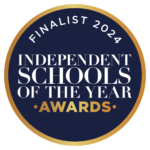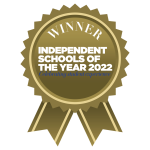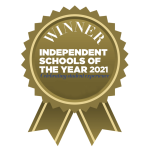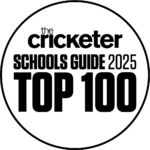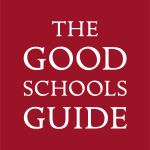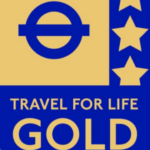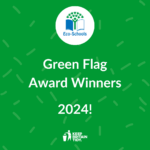Classics Trip to Crete – A Cretan Tale
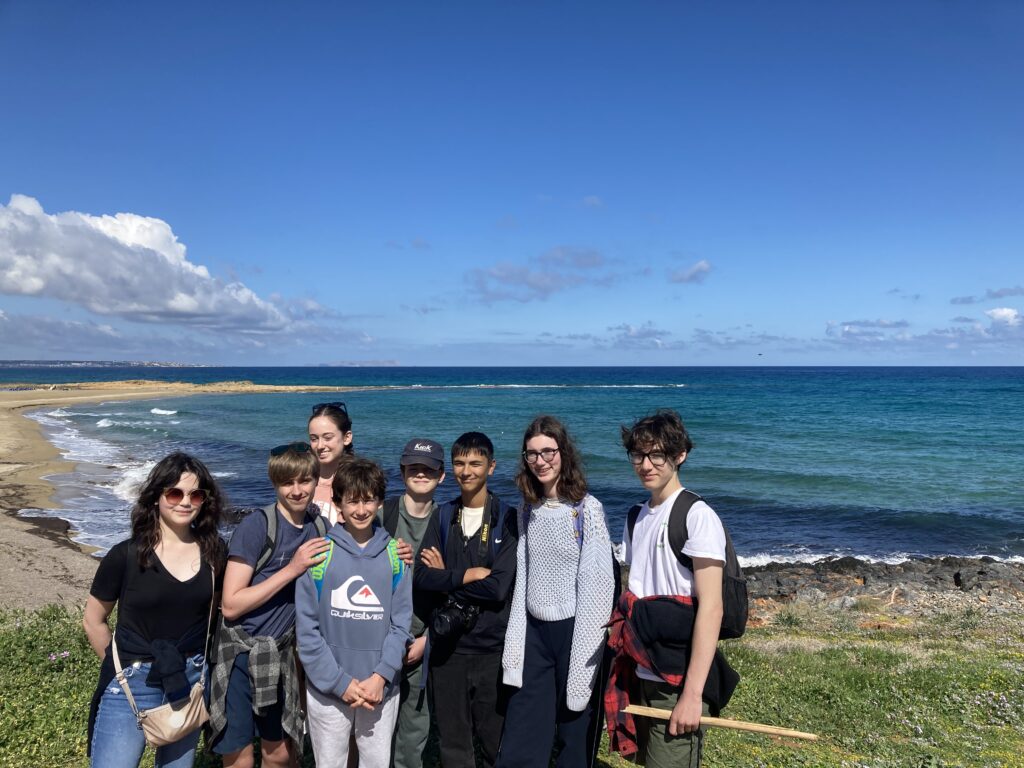
The Classics department scaled new heights, with 50 students venturing on an odyssey to the island of Crete, touring the ancient palaces of Knossos, Malia and Phaistos, exploring the rock-cut chamber tombs at Matala and visiting the stunning Lake Voulismeni. We studied the life and mythology of the Minoans, whilst basking in the Cretan sunshine and looking out for the Minotaur along the way!
A full itinerary of our trip is below:
DAY 1 – HERAKLION
Students arrived bright-eyed and bushy-tailed, right on time at Gatwick Airport. All went to plan, bar a boarding pass being sent down the conveyor belt, and we arrived safe and sound in sunny Crete. We arrived at our stunning 4* hotel in the centre of Heraklion, equipped with a rooftop swimming pool and lofty balconies which provide a beautiful view of the city. It had just opened and was newly furnished for the season, and so we were very lucky to be there.
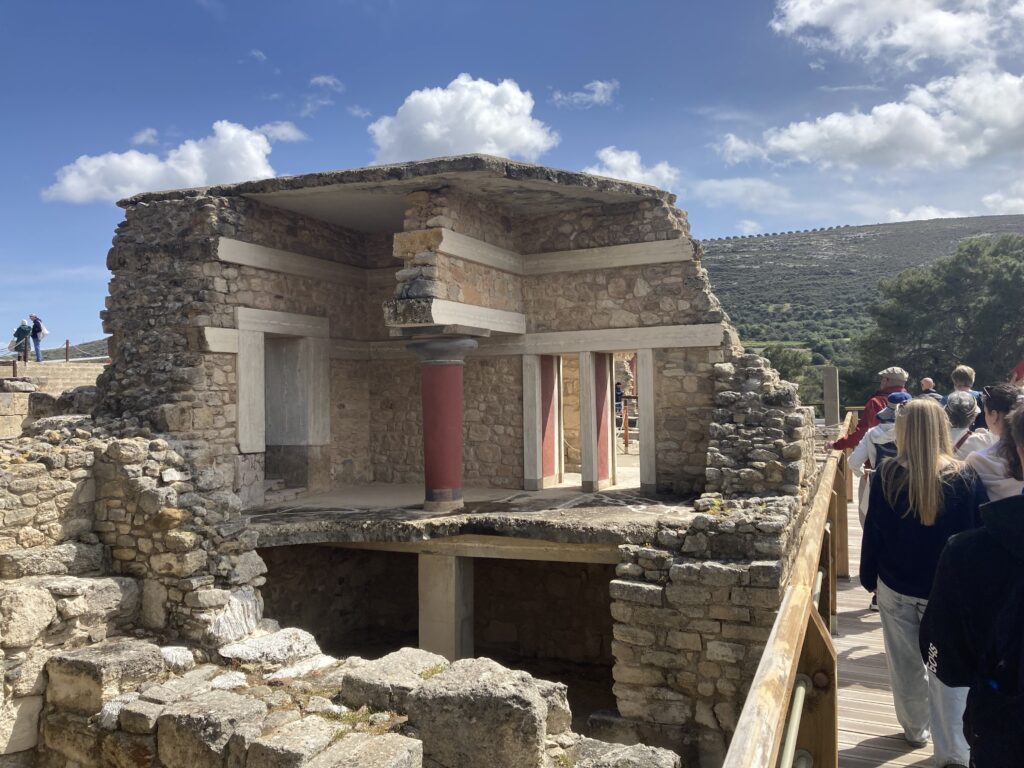
Nico, Year 10 commented, “Over the Easter break, we travelled to Crete with the Classics Department. Delving into early Greek history, we visited the palaces of Knossos, Phaistos and Malia. I found it fascinating to study the cradle of Greek civilisation and the birthplace of Zeus. We were fortunate enough to stay in close proximity to the museum of Heraklion where we could examine well preserved artifacts helping to bring history to life. We were lucky enough to enjoy time at the beach, and we sampled local cuisine at a traditional taverna.”
Students were led on a fascinating walking tour of the city in which we travelled to the Koules Fortress, built by the Venetians, and made friends with some of the locals. We all enjoyed some ‘happy Haribo’ at the buffet provided for dinner, and indulged ourselves in the bountiful bottles of Zaros water (‘the best in the world’) in free flow, before sleep descended on the island.
DAY 2 – GORTYN / PHAISTOS
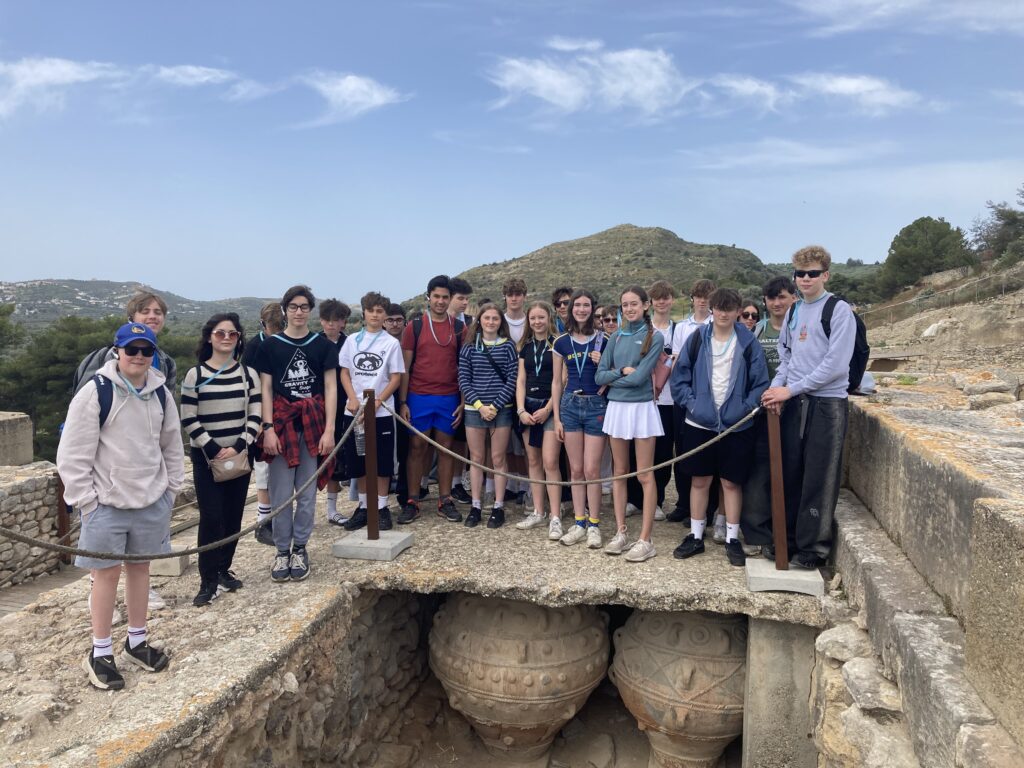
Our first stop was Gortyn Roman town, set amongst olive groves in the foothills of Mount Ida, with its public Codex, the oldest and most complete example of a code of ancient Greek law. We discussed the myth of Zeus and Europa, and viewed the site’s Odeion and cathedral to St Titus. The eponymous student Titus was given centre stage many times on the trip and was clearly a good omen on our tour.
We also visited the palace of Phaistos, with its monumental staircase, bulbous pithoi jars (R) and a spectacular view over the Psiloritis Mountains. The Palace ruled this region of Crete and even had its own port on the Libyan Sea. The Year 10s asked lots of edifying questions about Minoan palatial administration, and pondered on the island’s mythological past.
Another spectacular drive through the southern mountain ranges took us to Bronze Age Aghia Triada, a Summer Palace, before stopping off at Matala. A throng of welcoming shopkeepers beckoned us into their establishments, as we stopped for pork gyros and other Cretan delights. We then took a daring climb to the rock-cut chamber tombs overlooking the sea, utilised as cave dwellings by the 1960s hippy colony. We enjoyed some time on the beautiful beach, took the requisite photos with the hallowed CLC, and played a cheerful game of volleyball before returning to the hotel.
DAY 3 – KNOSSOS
Rosy-fingered dawn arose but alas, unseasonable rainfall had descended on Crete. Thankfully our guide kept us at ease and understated Cretan weather alerts reassured us that all would be well. The Museum was next door and is an ‘Open All Hours’ establishment, welcoming anyone and everyone to drop on in to explore its repository of amazing archaeological evidence of the Minoan Palace civilisation of Crete, including the famous bull’s head rhyton, ivory bull leapers and snake entwined priestesses.
Today was also the trip to the ‘big ride’ and number one tourist attraction of Crete – Knossos. This was the famed palace of Minos and home of the labyrinth. A group of peacocks met us at the entrance and reminded Mr Morrison of bygone days at Whitgift. Students discussed Sir Arthur Evans’ controversial restoration of the site, viewing the throne room with its delightful griffins fresco, and the dolphins decorating the queen’s quarters. This was a wonderful chance to bring the myth of Theseus and the Minotaur to life for students, as our guide discussed the dangerous bull-leaping and ritualised cannibalism which took place at the site.
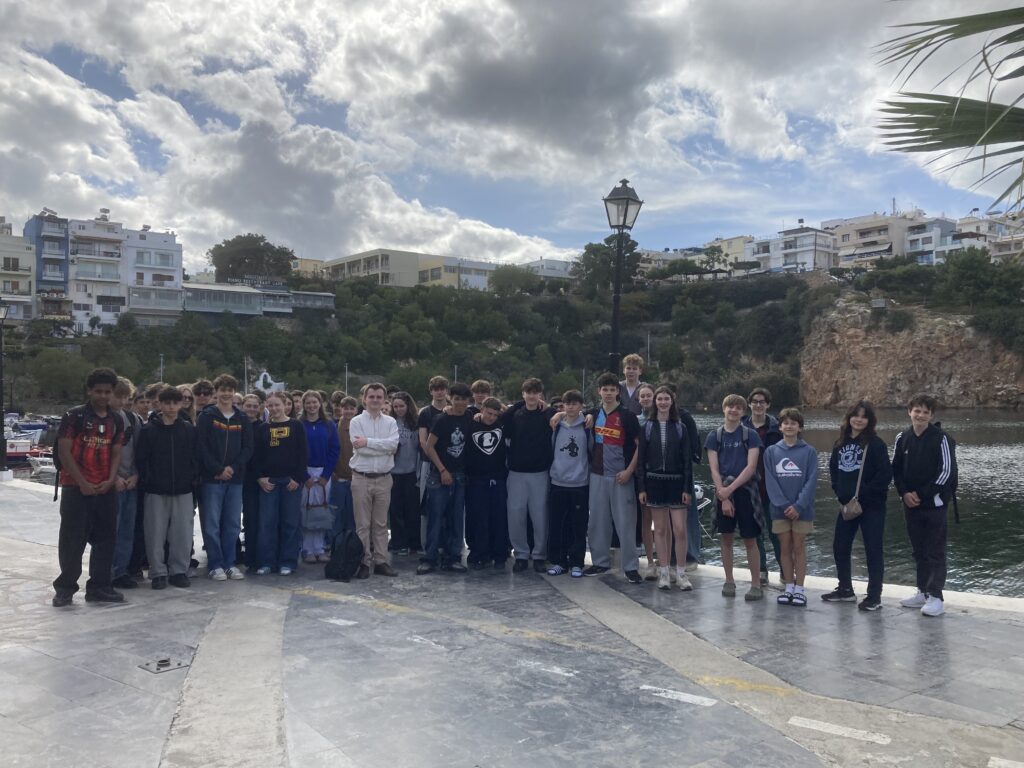
Our next stop was Agios Nikolaos and a trip to the beautiful Voulismeni Lake, a bottomless volcanic crater lake once frequented by the goddess Artemis. We enjoyed lunch at a spectacular beachside Greek taverna, complete with Cretan salad, dakos, tzatziki with pitta bread, cheese croquettes, mushroom risotto and a mixed grill platter, including souvlaki pork and chicken. Greek ‘xenia’ was truly on show!
Noah, Year 9 commented, “The trip this year to Crete was absolutely splendid. It included fun activities such as going to the beach, as well as including the historical parts of the island. My favourite part was going to Agios Nikolaos. The lake there was apparently bottomless. At the time I had been diagnosed with a lactose and gluten intolerance, but I could still enjoy the food that was there which was delicious and healthy. To conclude, this was a trip that was simply astounding and a once in a lifetime opportunity, so I would highly recommend it if the teachers decide to do it again.”
A ‘nostos’ to the hotel included a fire alarm – students were very well-drilled for this – and a mob of flare-wielding ‘Heraklion Hooligans’ descending on the city square to celebrate their semi-final football victory. Thankfully things quietened down, as we bedded down for an otherwise uneventful evening.
DAY 4 – GOURNIA / LATO
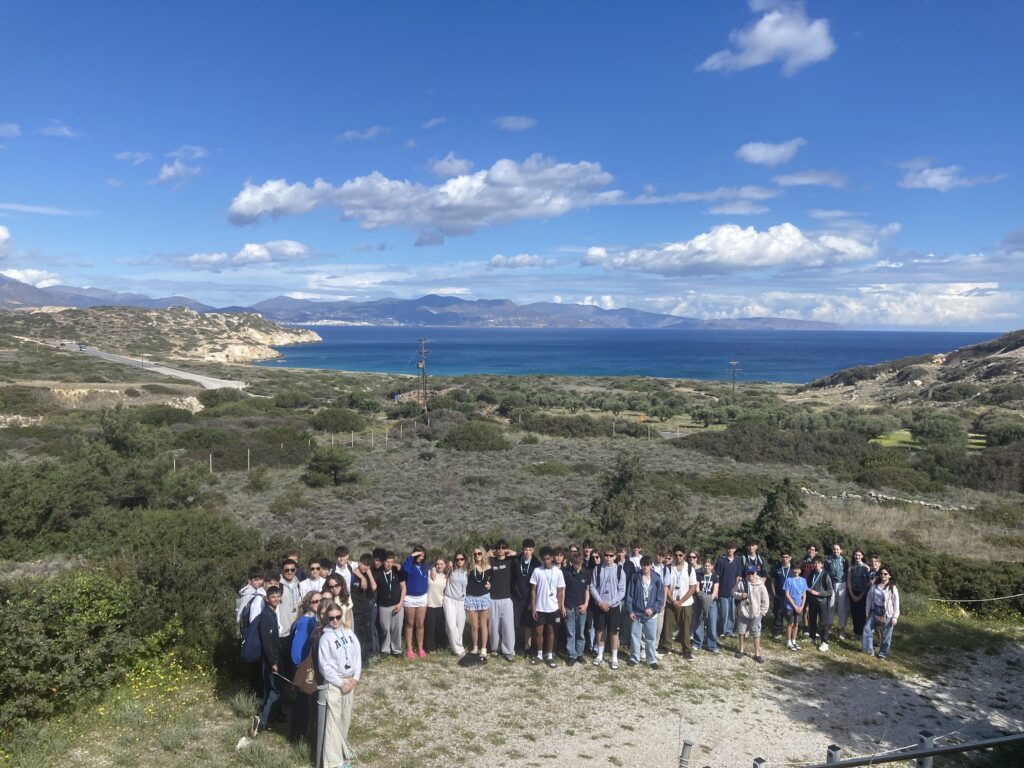
We began the next day with a visit to Gournia, driving through mountain ranges to the volcanic Lassithi Plateau. This was a Minoan trading city with palace quarters and theatrical area, destroyed by a fire, providing evidence of geometric town planning and domestic occupation. There were spectacular views on offer here as well as the ubiquitous double-headed axe, or ‘labrys’, etched into the rocks.
After a trip to the Church of Panaghia Kera, decorated with beautiful biblical frescoes, we had to abandon plans to visit the rocky Lato, due to a sudden deluge of rain. We hotfooted it to Kritsa, one of the most idyllic villages in Crete, where we could shop ‘till we dropped, and enjoyed a lovely meal at another Greek taverna. The weather brightened up at Mr Adams’ command, and students returned to Heraklion to buy some last-minute souvenirs and refreshments.
DAY 5 – MALIA
Our final palatial visit was to Malia, dating from 1700 BC and destroyed 1450 BC probably by the catastrophic eruption of Santorini and the ensuing tsunami. More pithoi jars, a bull-leaping courtyard and various palatial and storage spaces, together with a beautiful location nestled beside Mount Dikte, the birthplace of Zeus.
The tour ended at Potamos Beach, with its rockpools, sandy dunes and a family of African monarch butterflies emerging from the wetlands. This was a lovely finale to the trip, before students left via sunny Heraklion Airport to return home.
Walid, Year 9 concludes, “The Crete trip this year was an amazing opportunity to learn about not only ancient but also modern Greek culture. Every day we had a new place to go to full of details that told the stories of the people that lived in Greece thousands of years ago. In this trip not only did we explore ancient ruins, but we also explored Greek cities like Heraklion and Matala. Overall, this was an incredibly well organized and interactive trip.”
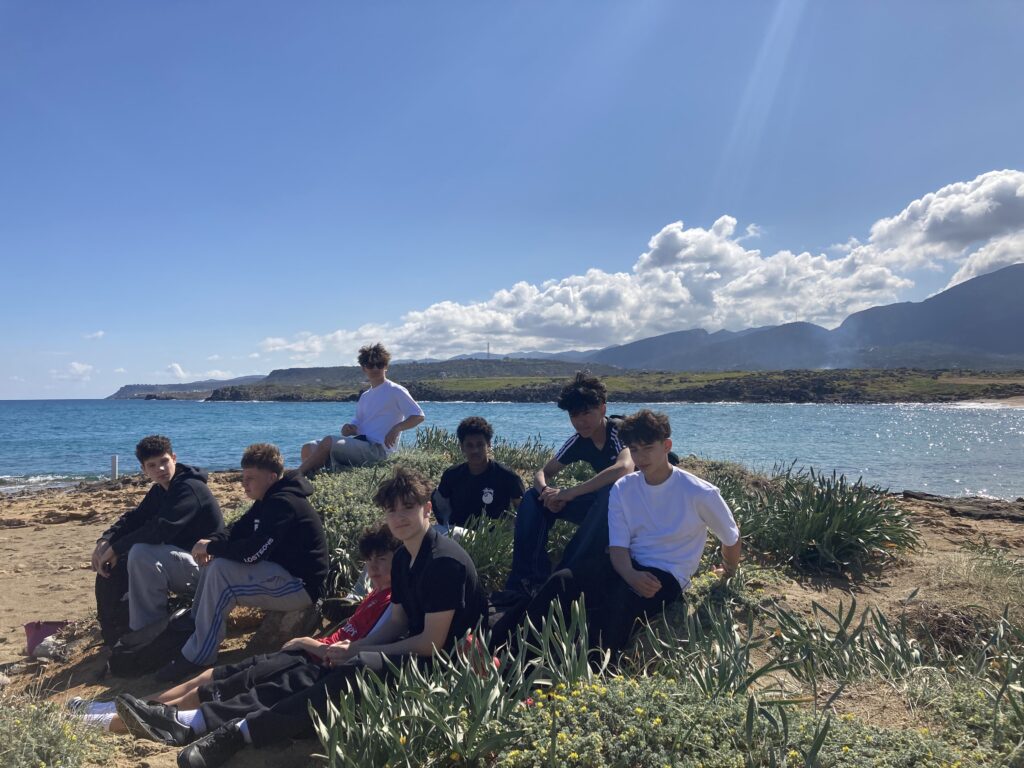
Thank you to all students for their excellent behaviour and enthusiasm on the trip and to Mr Adams, Miss Aitken-Burt, Mr Clarke and Miss Johnson for all their help on the trip. As our guide told us, we shall meet again. ad maiora!
Mr Morrison, Teacher of Classics


